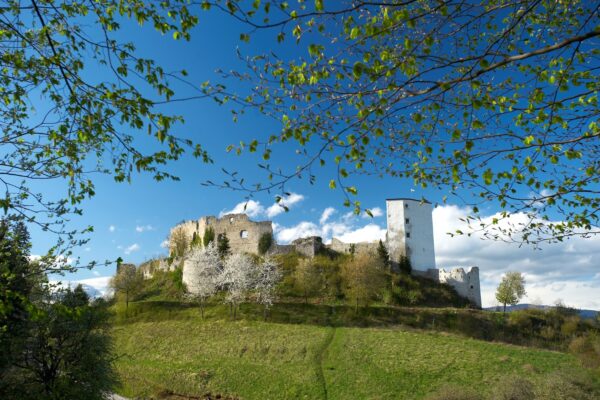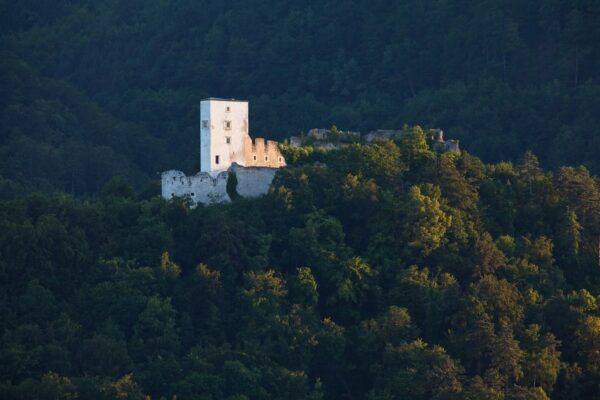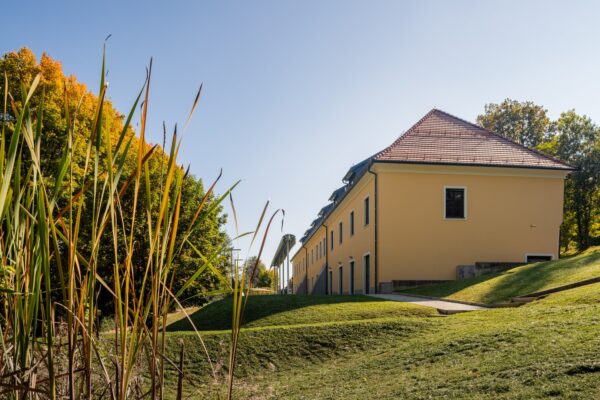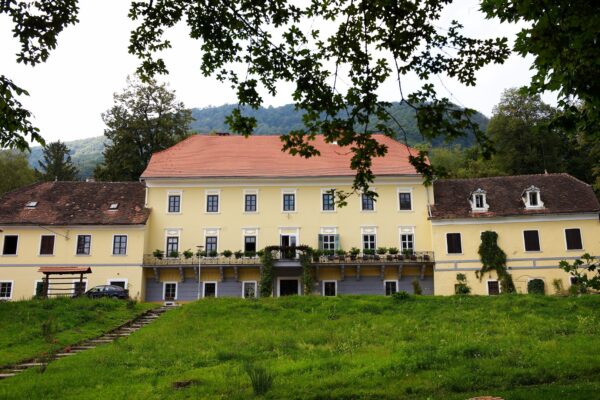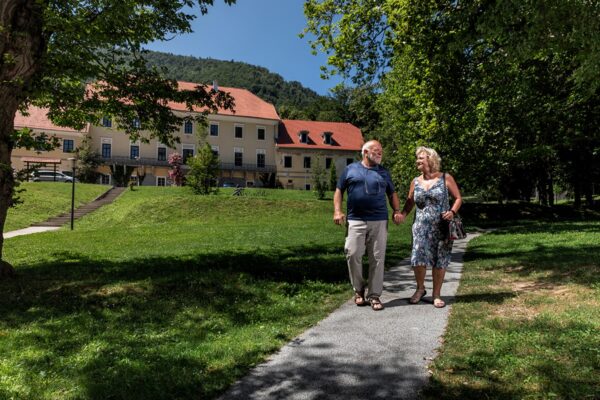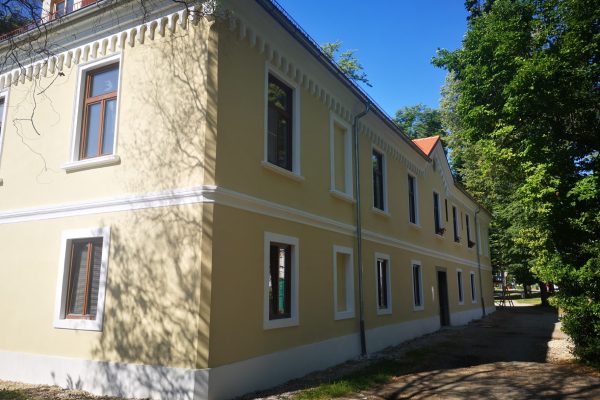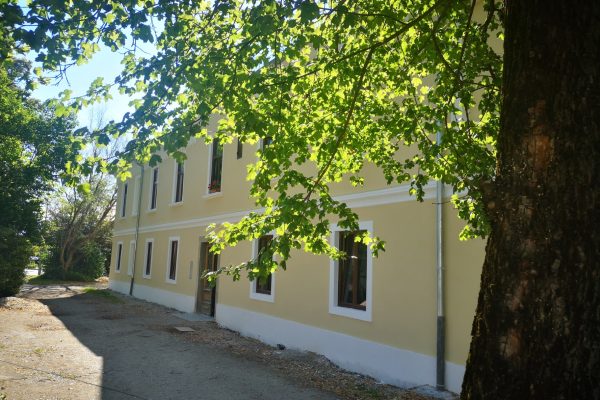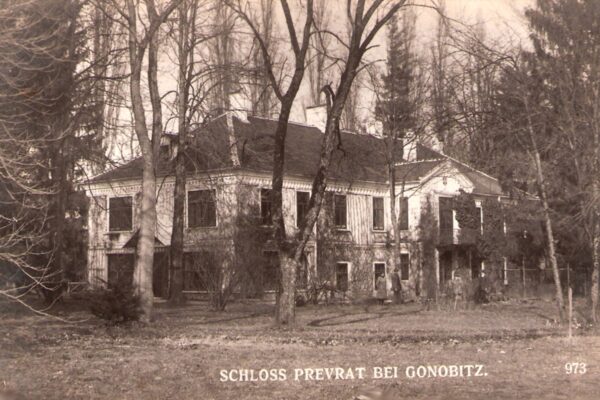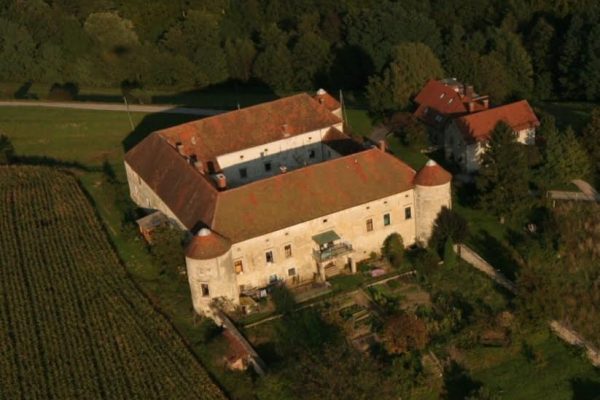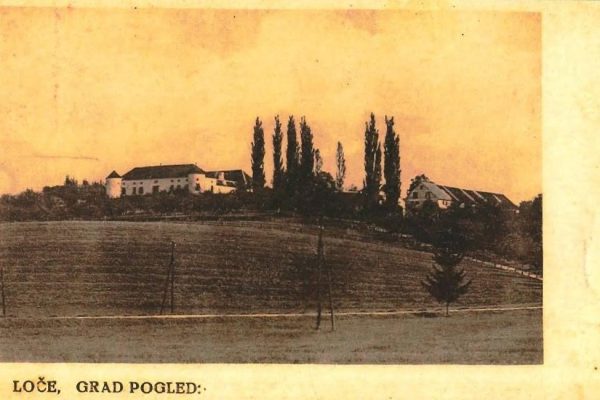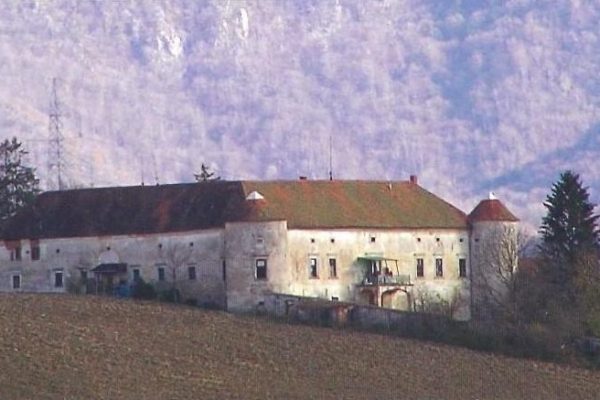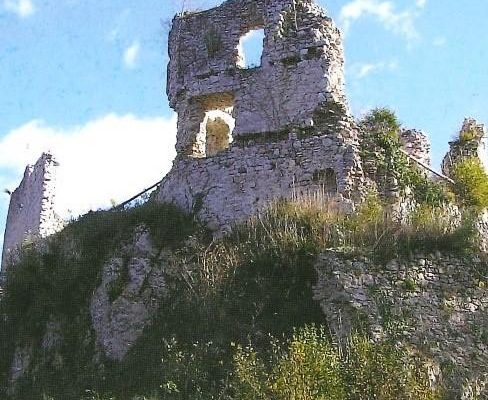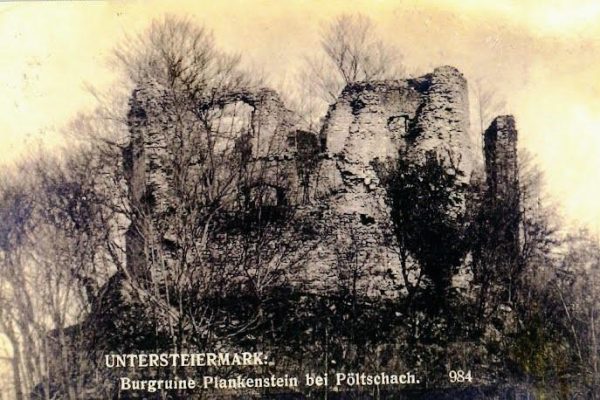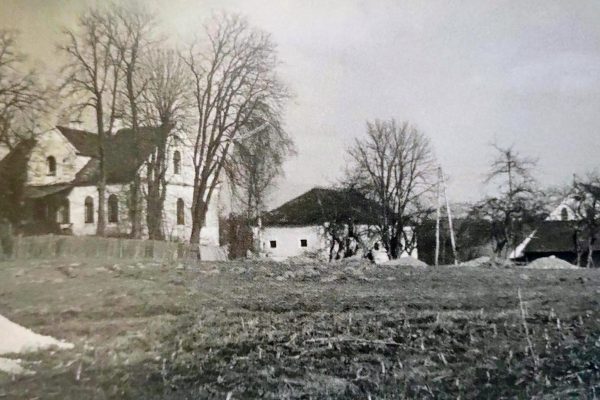One of the oldest castles in Slovenia
The castle was one of the largest and most magnificent in Styria, with its remains still among the most important castle ruins. First mentioned in 1165 in the charter of the founding of the Žička kartuzija Monastery, it was certainly built much earlier.
Most of the walls of the castle date back to the Gothic era. This includes the impressive five-pointed tower, which began leaning against the residential building in the 14th century, and the massive defensive wall mantle. Subsequently, this design was expanded with additional residential buildings, and the perimeter was fortified with a belt of Renaissance fortifications, including a bastion with walls almost four meters thick. The castle serves as a typical example of a burgeoning fortress, gradually evolving from its modest Romanesque origins into an expansive castle complex.
The first recorded owners of the castle were the Slovenske Konjice lords, when Liupold of Slovenske Konjice is mentioned for the first time, in 1164. Considered church benefactors, eminent feudal lords, deeply religious and belligerent individuals, they governed the castle until 1329, after which the castle changed hands among various noble families. The Tattenbach family held ownership for a century. However, Ivan Erazem Tattenbach, a member of the family, was executed by beheading and all his possessions were confiscated due to his involvement in a conspiracy against the emperor. Thus, the castle came under the control of the Carthusians from the Žička kartuzija Monastery, marking the beginning of this magnificent building’s deterioration. By the 18th century, when the castle was taken over by it’s final owner, Duke Windischgrätz, the building was already in ruins.
In recent years, the remnants of the castle have undergone restoration to protect them from decay, while individual parts have been adapted to facilitate activities that will help bringing new life to the castle with appropriate content. The old castle has long been, and continues to be a landmark of the city, which has flourished beneath its foothills for centuries.
Castle Reconstruction
The history of the Trebnik Manor dates all the way back to the 14th century, more precisely to 1308, initially introduced in historical sources as “Trebnikke”, and it was mentioned as a manor under the Old Konjice Castle in 1362. The manor acquired its final appearance in the 16th century.
Over time, numerous events have affected the manor and its owners. The most characteristic and significant owner was the Windischgrätz family, who possesed the estate from 1828 until the end of the World War II. Though they only resided in it occasionally, using it more as a summer retreat, considerable attention was devoted to its surroundings, particularly its horticultural aspects. They maintained a landscaped garden and employed their own gardener. This cultivated environment fostered a deep appreciation for flowers, a love that permeates Slovenske Konjice and endures to this day.
After the war, the manor came under the ownership of the Municipality of Slovenske Konjice, which repurposed the premises for various activities including a cinema, café, kindergarten, amongst others. This most likely contributed to the rather poor and neglected state in which the mansion was left in 1997.
In the shadow of the mighty Konjiška gora and the tranquility of the charming park by Trebnik, which continues into the over 870-year-old town centre of Slovenske Konjice, there is a strong pulse of the past. Today, the Trebnik Manor is generally accessible and intended for the implementation of health and related activities in Building B, as well as catering and tourism or accommodation, and some departments of the Slovenske Konjice Music School have found a home in Building A.
A sufficient number of parking spaces are provided next to the building, and the manor is located in an extremely charming and pleasant part of Slovenske Konjice – in a renovated city park with a picturesque jogging trail, a sports park, a quaint pond with an islet and a children’s playground in the shade of mighty trees. The park is divided by the murmuring stream, Ribnica, which continues its path past the Church of St. George into the Slovenske Konjice Old Square.
On the ground floor of the renovated Building B of the Trebnik Manor there is a Trebnik Restaurant and Café, and on the first floor, which includes four business premises, there are various service activities, including rooms for lectures, consultations, business meetings and conventions. On the same floor there is also the 90 m2 “Christianne’s room” – named after the last living person from the Windischgrätz family. It can accommodate 40 to 60 people offering various layouts with 24 conference tables, 60 chairs and a podium. The room is heated and equipped with a projection screen, a freestanding whiteboard, an LCD projector and internet access. Over time, it has also become a venue for occasional exhibitions.
In the attic space of the renovated manor, visitors can sleep in comfortable and tastefully furnished rooms. The Trebnik Manor – ROOMS offers eight bright and spacious rooms, with contemporary furnishings. Read more about accommodation at www.dvorectrebnik.si
The mansion, which most likely stood here as early as the 18th century, was later named after the Hungarian baron and retired senior officer of the Austro-Hungarian Monarchy, Ödön Vay de Vaya.
Towards the end of the 19th century, Baron Ödön Vay de Vaya bought a mansion, known as Prevrat (Schloss Preurath), which he likely renovated later on. Hailing from a politically influential and affluent Hungarian Protestant noble family, the Hungarian baron married Adelma, born Wurmbrand – Stuppach, a noblewoman. They met at a young age and married later on, when Adelma was twenty years old. The couple gained immense popularity among people of Slovenske Konjice, particularly for their philanthropy. In 1897, they also commissioned the construction of the Red Cross, or “Christiane Lazaret” hospital in Slovenske Konjice.
They selected Slovenske Konjice as their residence entirely by coincidence. Adelma randomly slid her finger across the map, until it stopped at the name Gonobitz, today known as Slovenske Konjice. They purchased the mansion at Prevrat, as indicated by the entry in the land register on February 4, 1867. Presently, this mansion is referred to as Baronvaj.
Today, it serves as rental apartments.
The Pogled Manor stands on a slope above Loče. The name of the manor indicates the possibility that a fortified outpost may have existed here as early as the Middle Ages, serving to safeguard the path from Slovenske Konjice along the Dravinja Valley.
The surrounding area of the manor was documented for the first time in 1369, though it remains uncertain whether it already existed at that time. Some of the adjacent were estates owned by Ulrik Grasl from Poljčane, who sold them to the Žička kartuzija Monastery that year. The current manor is believed to have been constructed around 1524, during the tenure of Ahac Schrott, who served as its caretaker until 1590.
The manor features a square plan, with three round towers and an arcaded courtyard added in the 16th century. In 1617, the manor underwent reconstruction, as evidenced by the year inscribed above the connecting door. At the time, the manor was owned by Max pl. Plöschen. In the same year, the Plöschen family was granted the title “von Pogledt”, from which the name of the castle itself originates.
Throughout its existence, the mansion has changed hands numerous times, and currently it serves as rental apartments. Consequently, the interior spaces have undergone significant modifications. However, some original features remain, including the barrel vault on the ground floor of the eastern part of the southern section, which once served as kitchen, as well as the cross vaults on the ground floor of the western end and the original chapel, now repurposed as a room, located on the floor of the western section.
Southwest of Poljčane, on the steep hill of Zbelovska gora Mountain, there are ruins of the former Zbelovo Castle. The latter was indirectly referred to in 1206, when Ortolf I Zbelovski was first mentioned.
As a “Vesten Plankenstein”, the castle is first directly mentioned in sources dating back to 1428. Initially, it served as the seat of the Lords of Zbelovo (1202 – approx. 1400), before passing through the hands of several owners. In 1580 the castle came under the ownership of the Counts of Thurn, who held the property until their downfall.
Zbelovo Castle played a significant role, particularly in safeguarding the road connecting the Savinja Valley to the Podravje region. It also functioned as a toll office and provincial court, providing legal representation to numerous church institutions. By the second half of the 17th century, the castle had fallen into ruin, as evidenced by Vischer’s topography.
According to tradition, the mansion, located in the village of Dobrnež near Slovenske Konjice, was named after a barren hill visible in its background.
Right to the entrance, a preserved inlaid slab in the hallway attests that the mansion was newly constructed in 1542 by Adam of Lindek. Stegenšek noted that there likely was no mansion in the area before that year.
According to some art historians (Šumi, Stopar), Golič represents a typical example of a Styrian Renaissance mansion. The structure features an almost square floor plan, with two round defensive towers situated at opposite corners. The layout of the rooms is symmetrical, and historical records suggest that the mansion was probably surrounded by a wide, water-filled ditch in the past, which has since been filled in. Additionally, the design of the park complex in close proximity to the mansion, forming a complete ring with the building, is also noteworthy.
The manor is located northwest of Slovenske Konjice between Dravinja River and the Koprivnica Stream.
The hamlet, named after an oak tree (dob), was initially documented in 1375 in historical records. The manor first appeared in sources in 1497, mentioning a certain “Jurij zu Dobie”. During time of Augustin Stegenšek, the entrance to the courtyard was adorned with a chronogram, which is no longer present today. It carried an inscription stating that the building was erected by Franc Ksaverij Blagatinšek, later often referred to as Blagotinšek by subsequent writers. Later owners included August pl. Clossman (1853–1860), Baroness Beatrix Lebzeltern (1860–1876), Baroness Maria Baltin (1876–1896) and Countess Aleksandrine Sermage (1896–1945).
In his writings, Stegenšek referenced the account provided by Clossman’s daughter, who heard the story that Dobjihof was once female monastery of the Žiče order, as indicated by the chapel and lattice in front of the windows. This assertion was allegedly supported by the absence of a basement in the house, as underground tunnels presumably connected it to the Žička kartuzija Monastery in the past. However, this claim is not accurate, as the building was not constructed until 1763, and the chapel was built and is consecrated in 1768.
There are several other tales associated with the manor, many of which revolve around Countess Aleksandra Sermage. Prior to her residency at Dobjihof, she served as an educator at the imperial court in Vienna. The locals of Slovenske Konjice affectionately referred to her as the “Countess of Dobjihof”, recognizing her for her warmth and hospitality.
Presently, the manor has been repurposed to accommodate rental apartments.
Sources:
- Adelma Vay de Vaya
2022 ‘Adelma vay de Vaya – kontroverzna Konjičanka.’ Web source. Published on 5 January 2018. - Boldin, Aleksandra
2004 Konjice: skozi zgodovino do sodobnosti. Slovenske Konjice: Municipality of Sl. Konjice and the Konjice Historical Society. - Ciglenečki, Jan
2016 ‘Grad »Pogled-Anschau«: Odmevi Wolframovega Parzivala v novejših interpretacijah Gralovih legend na slovenskem Štajerskem’ V: KONJICE: 870 let prve pisne omembe. Mag. Aleksandra Boldin, ur. Slovenske Konjice: Slovenske Konjice: Municipality of SK. page 76-83. - Hazler, Vito
2013 Kulturna dediščina – izziv sodobnemu podjetništvu. Kulturna dediščina, Volume 9. Ljubljana: Univerza v Ljubljani, Faculty of Philosophy. - Ožinger, Anton in Ivan PAJK, eds.
1996 Konjiško ob 850-letnici pražupnije. Slovenske Konjice: Archparish Office. - Jakič, Ivan
1995 Gradovi, graščine in dvorci na Slovenskem. Radovljica: Didakta. - Stegenšek, Avguštin
2010 Konjiška dekanija. Slovenj Gradec : Cerdonis. - Stopar, Ivan
991 Grajske stavbe v vzhodni Sloveniji, II. Ljubljana: Faculty of Philosophy. - Židov, Nena
2015 ‘Adelma Vay – spregledana zdravilka iz Slovenskih Konjic’ Etnolog: Glasnik Slovenskega etnografskega muzeja 25: 139-154.
